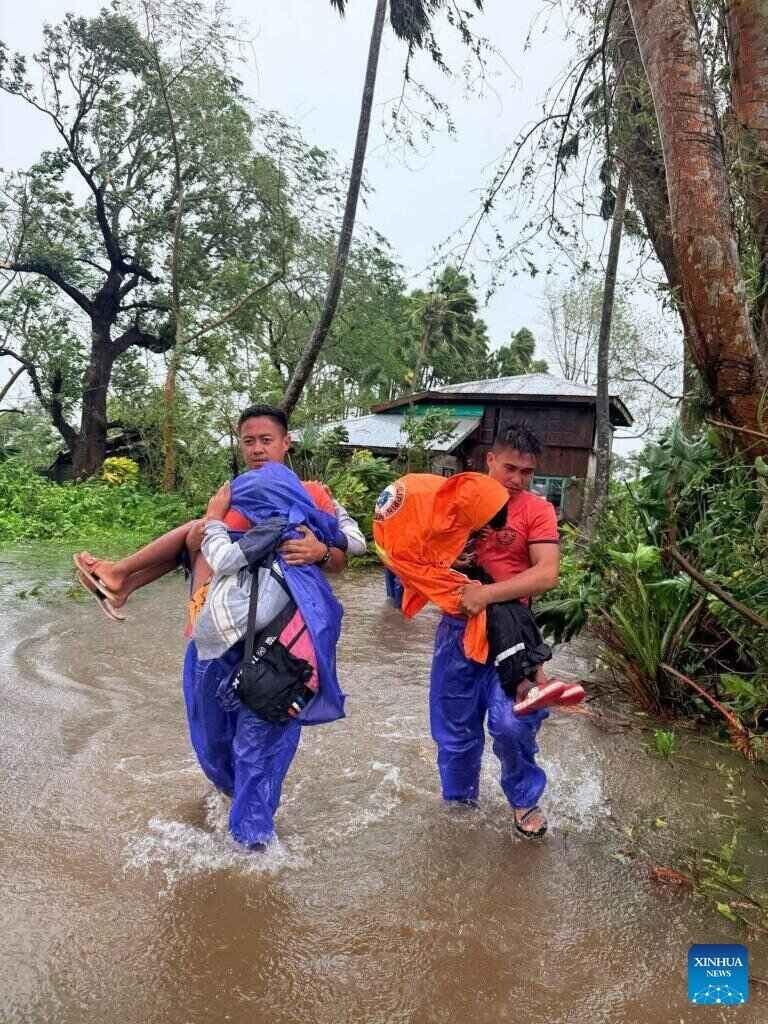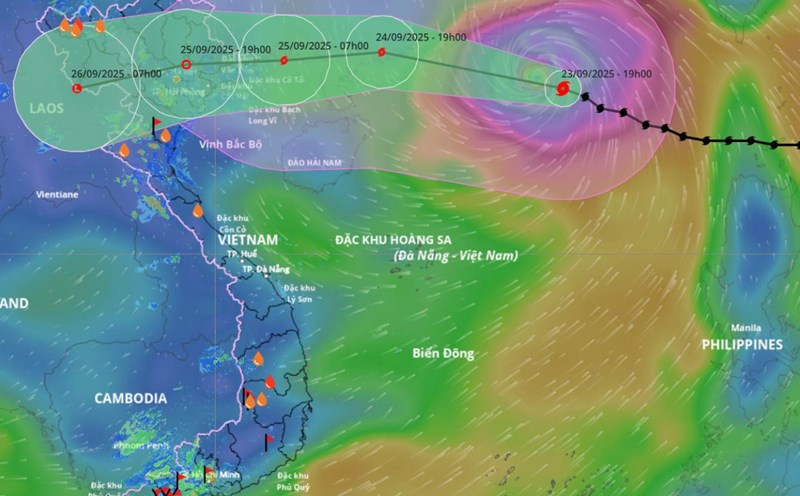The Philippine Atmospheric, Geophysical and Astronomical Services Administration (PAGASA) confirmed that super typhoon Ragasa (local name Nando) directly passed through Calayan Island in Cagayan province, Northern Philippines on the morning of September 22. This is one of the strongest storms to hit the area in many years.
According to the Joint Typhoon Warning Center (JTWC), at the time of Ragasa's landfall, the storm reached winds of 270 km/h, gusts of up to 295 km/h, moving at a speed of about 22 km/h. The 74km-long eye of the storm moved straight across Calayan Island, lasting for several hours with terrible devastation.
Satellite images show rough seas, waves 10 to 14 meters high hitting the coasts of Batanes, Cagayan and Ilocos provinces. The water level rose above 3m, endangering the lives of people in low-lying coastal areas.
Local authorities have evacuated more than 8,200 people in Cagayan and 1,200 people in neighboring Apayao province. The evacuation centers were packed with people, while power was cut across the country due to the transmission line system being knocked down by the storm. In Calayan, the entire island was submerged in darkness for hours.
Domestic flights, ferries and fishing activities have been suspended. Schools and government agencies in 29 northern provinces, including the capital Manila, have been suspended to ensure safety.
At least one person died and seven others were injured in a typhoon-related landslide in the northern Philippines. The death toll is expected to continue to rise as rescue forces reach many isolated areas.
In addition to the damage to houses, infrastructure and crops in the North were severely damaged, the Philippine Natural Disaster Prevention Agency said. Rice and corn about to be harvested on thousands of hectares are deeply flooded or wind- equivalent, threatening the food security of the whole region.

Meteorological experts say Ragasa possesses typical characteristics of super typhoons in the climate change era: Strong intensity, rapid increase, and widespread destructive power. Warmer seas and favorable wind conditions have contributed to the maximum intensity of the storm as it sweeps through Calayan Island.
Philippine President Ferdinand Marcos Jr. has asked the military and police to support the rescue work, and urgently allocate relief goods to severely affected areas.
Typhoon No. 9 Ragasa is forecast to continue moving westward, making landfall in southern China on September 24 and affecting Quang Ninh - Hai Phong from September 25.











